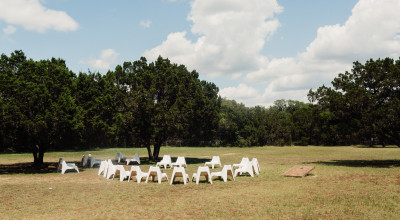The Next Big Drug Threat?
December 4th, 2023
By P. Casey Arrillaga, LCSW, LCDC
As often happens, the next big drug threat is something that most people have not heard about yet. Providers and authorities do not routinely test for it, and in fact there is not a standard, easy test to detect it in the way there is for substances like opiates or THC. It is called xylazine (street name “tranq”), and it is starting to be noticed in an increasing number of overdose deaths. Unfortunately, we are likely to see that percentage only rise. At Windmill, we are not satisfied to wait until something has taken over the drug world before we start talking about it. Thus, this post is intended not only as a source of forward-looking information, but also as a call to action so that our society can recognize and address this threat before it takes too many more people.
What We Know So Far
Xylazine is a veterinary tranquilizer that has been found in the drug supply of some U.S. regions like Puerto Rico for some time, but it’s appearance in the mainland has come more recently. Other veterinary tranquilizers, such as ketamine, have been used illicitly for years to get high and even for legitimate mental health treatments in the past few years, but these have been sought out for their psychedelic effects.
Xylazine is being used differently. According to users, xylazine is mixed with synthetic opioids such as fentanyl to extend the high that the opioid users chase. It helps address the complaint from IV users that the feeling they get from fentanyl injections is too brief. This means that xylazine use is potentially increasing the danger from fentanyl because it makes the injected opioid even more appealing if the effects can be prolonged.
It is also notable because many street drugs have unknown substances added, often referred to as being “cut,” and this increases their danger, but xylazine is being added on purpose. As a result, it is increasingly being found in opioid overdoses, especially those involving fentanyl injections in the Northeastern United States. Given that fentanyl itself is often cut into other drugs without warning, people who inject substances are now at a growing risk of taking multiple drugs they did not intend, and this only increases the risks including death.
To make matters worse, while someone overdosing on opiates can potentially be saved using NARCAN, the best-known brand name for naloxone, if the same overdose includes xylazine, the NARCAN may not work. Thus, the rise of xylazine may undermine current public health efforts to reduce opioid overdose deaths.
If all this wasn’t bad enough, xylazine has a potent and unintended side effect that makes it dangerous whether mixed with other drugs or not. It can lead to skin lesions that are not limited to the parts of the body where the intravenous user injects themselves. Instead, these open sores can appear anywhere on the body, most often on the arms and legs. They do not easily heal, with some users complaining that the lesions persist for months. Besides the obvious pain from having these open sores, each one increases the risk of infection for the user, something that is already present for anyone using a needle.
What Can be Done?
Xylazine is currently only detected through the use of complex, costly, and time-consuming gas chromatography-mass spectrometry drug tests. While this is widely considered the gold standard of drug detection, it is also impractical on a widespread scale, especially if quick results are needed. Front line testing is usually done through detection of metabolites in urine. Currently, there is no such test for xylazine. Clearly, this needs to be changed sooner rather than later. Just as there are testing strips that can be dipped in urine for many of the most common substances of abuse, we need a similar test for xylazine and we need it soon.
Next, this testing needs to be scaled up so that we as society can get a more realistic idea of how and where xylazine use is spreading. For the same reason, when street drugs are tested, something researchers and authorities do routinely, xylazine detection needs to be added to the agenda.
Finally, it is time to get ahead of the problem by researching ways to block an overdose that includes xylazine so that the momentum that has been building for saving lives through the use of NARCAN does not get derailed. When Northeastern U.S. cities are seeing as many as 25.8% of overdose deaths involving xylazine and it has been detected in all four U.S. census regions, it is time to take action before this is a full-blown crisis.
The Bottom Line
Xylazine is poised to become the next big drug threat, something that increases overdose risk for opioid users in the middle of an opioid epidemic. It carries other nasty side effects of its own while compounding some of the biggest dangers other drugs. This is the time to recognize the threat and address it before it becomes worse than it already is.
About The Author
P. Casey Arrillaga is the Team Leader for Education at Windmill Wellness Ranch, and he is the author of books including “Realistic Hope: The Family Survival Guide for Facing Alcoholism and Other Addictions”. His book


